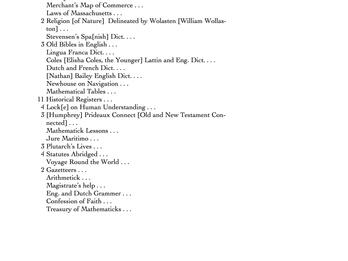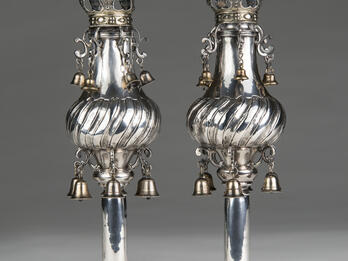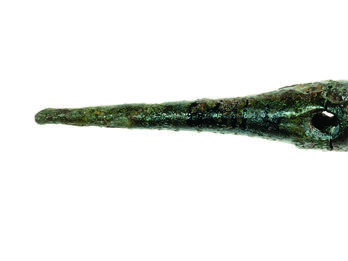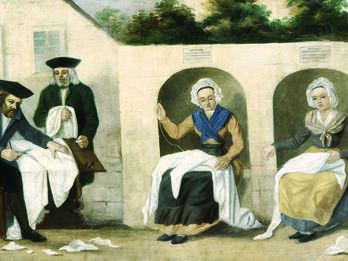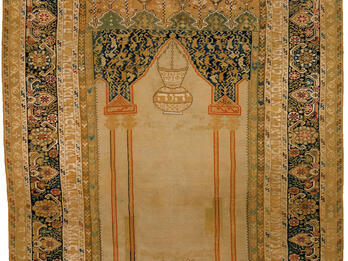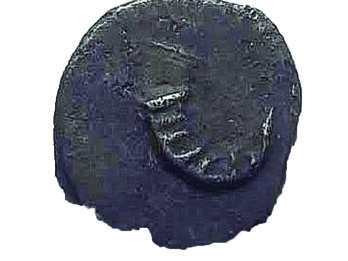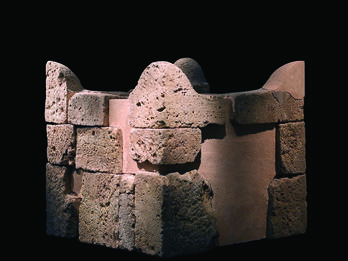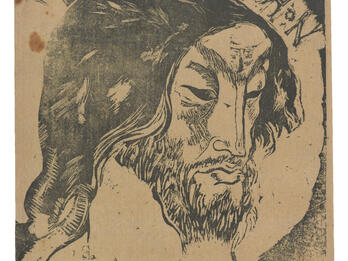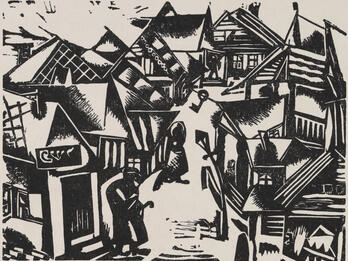Showing Results 4361 - 4370 of 5412
Restricted
Image
The inventory of the goods belonging to Philadelphia Jewish merchant Nathan Levy includes religious books in Judeo-Spanish, as well as numerous secular classical books and musical instruments
Contributor:
Nathan Levy
Places:
Philadelphia, British America and the British West Indies (Philadelphia, United States of America)
Date:
1753
Subjects:
Restricted
Image
Torah finials are a pair of ornaments used to decorate the upper ends of the rollers on which the Torah scroll is wound. The Hebrew term rimonim, which means “pomegranates,” references the…
Contributor:
Myer Myers
Places:
Philadelphia, British America and the British West Indies (Philadelphia, United States of America)
Date:
1776
Subjects:
Categories:
Restricted
Image
Toggle pins and fibulae were fasteners for garments, and because they were often decorated, they also functioned as jewelry. The toggle pin was a thick straight pin, ornamented on its upper part or…
Places:
Mizpah, Land of Israel (Tell en-Nasbeh, West Bank)
Date:
Iron Age I, 12th–10th Century BCE
Subjects:
Categories:
Restricted
Image
Women played key roles in preparing the deceased for burial. This painting shows women’s involvement in the ultimate act of generosity.
Contributor:
Artist Unknown
Places:
Praha, Holy Roman Empire (Prague, Czech Republic)
Date:
ca. 1780
Subjects:
Categories:
Public Access
Image
This Torah ark curtain from Gördes, Turkey, features an archway flanked on either side with double columns and a hanging lamp, a motif common to both Islamic prayer rugs and mats and Ottoman Torah ark…
Contributor:
Artist Unknown
Places:
Gördes, Ottoman Empire (Gördes, Turkey)
Date:
Late 18th–Early 19th Century
Subjects:
Categories:
Restricted
Image
This is a Judean imitation of a popular Athenian coin type. On the front is the head of Athena, distinguished by her helmet. On the back is an owl, the symbol of Athena. To the left of the owl is a…
Places:
Yehud, Land of Israel (Southern Israel, Israel)
Date:
Persian Period, 4th Century BCE
Subjects:
Categories:
Restricted
Image
The front of this coin depicts an animal horn, probably a shofar (parallel lines across the horn suggest horns of rams and some other animals). If this is a shofar, it likely signifies praying to God…
Places:
Yehud, Land of Israel (Southern Israel, Israel)
Date:
Persian Period, 4th Century BCE
Subjects:
Categories:
Restricted
Image
This altar is approximately 3.5 feet (1.1 m) tall and 5 feet (1.5 m) square. The protrusions at its upper corners are reminiscent of the “horns” of the Tabernacle altar (see “The Tabernacle”)…
Places:
Beersheba, Land of Israel (Beersheba, Israel)
Date:
Iron Age IIB, 8th Century BCE
Subjects:
Categories:
Public Access
Image
The young Jewish intellectuals of Barcinski’s generation were interested in pushing boundaries, including by employing Christian imagery, as Barcinski did in this portrait of John the Baptist. The…
Contributor:
Henryk (Hanokh) Barcinski
Places:
Lodz, Second Polish Republic (Łódź, Poland)
Date:
1919
Subjects:
Restricted
Image
This woodcut was published in Petrograd (Saint Petersburg) after Aronson had left the Soviet Union. In it, Aronson combined elements of cubo-futurism and constructivism. Several figures can be spotted…
Contributor:
Boris Aronson
Places:
Moscow, Russian Soviet Federative Socialist Republic (Moscow, Russia)
Date:
1920


